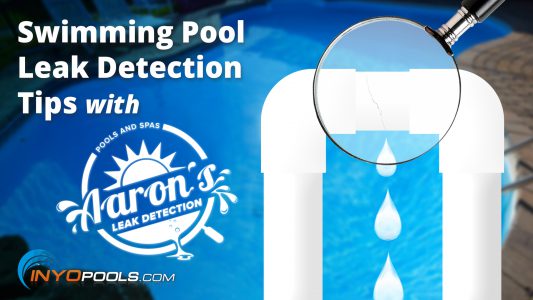The most common way a swimming pool loses water is through evaporation. As long as a swimming pool is regularly exposed to the heat of the sun, it’s bound to lose about two inches of water per week. Most pool owners use a basic pool cover to reduce evaporation and keep the temperature constant, as it can insulate the water from the elements. Though, what if a covered pool continues to lose water? This would be the time you should consider the possibility of a swimming pool leak. You might want to call a pool leak detection service right away, but it’s best to make sure that a leak does exist before bringing in the experts.
There are plenty of benefits to owning a swimming pool, from the low-impact exercise you get to do in it, to the fun dips with your loved ones on weekends.
Owning a pool, however, isn’t all fun and games. It comes with lots of responsibilities, too. Keeping the pool clean, checking the equipment, and testing the water chemistry are just some of the tasks pool owners are expected to fulfill if they want a consistently safe and healthy swimming environment.
Then, there’s also water conservation, which should be a top priority for every pool owner. With the amount of water swimming pools require, pool owners need to be conscious of water loss for financial and environmental reasons.
Signs of a Swimming Pool Leak
Still, your best option to repair swimming pool leaks would be to get the services of swimming pool leak detection professionals. They have the training, experience, and equipment to detect and fix any swimming pool leak accurately and much quicker.
- Higher water loss—As mentioned above, swimming pool water loss due to evaporation would be approximately a couple of inches per week. If you’re losing more than that in the same period and you have a covered pool, there could be a leak somewhere.
- Sky-high water bills—A swimming pool owner is no stranger to high water bills, but if your recent bills have become astronomical despite overall water usage at home remaining the same, the possibility of a leak somewhere in your pool is high.
- Puddles of water near the pool—While there’s nothing surprising about standing water near your pool when it’s used regularly or when it rains, the existence of a puddle when no one has been using the pool lately, and it hasn’t rained for some time is suspicious.
- Cracking or shifting tiles—Ground movement is the most common cause of pool cracks. When you see lots of cracks or big gaps, the soil surrounding the pool may be shifting a lot more than anticipated, possibly aided by excess water leaking out of your pool.
- Algae growth—The chemicals you put in your pool stem the growth of algae. Since a swimming pool leak means it would also be dumping those chemicals along with the water, the resulting imbalance will foster algae growth that can turn your pool green more quickly.

Methods For Confirming A Swimming Pool Leak
The bucket test, in a nutshell, is a way to rule out evaporation as the culprit for the water loss.
It’s usually done by turning off the pool pump and placing a 5-gallon bucket of water beside the pool. You will need to mark the water line in both the bucket and the pool and leave it there for 24 hours. If the pool registers greater water loss than the bucket, the likelihood of a leak is high.
Some prefer putting a 5-gallon bucket of water on their pool’s second step, marking the current water level inside and outside the bucket, and checking it after 24 hours. The water level drop both inside and outside the bucket should be similar if evaporation is the cause. If the drop outside the bucket is higher, there would be enough reason to suspect a leak. On the other hand, the dye test is all about pinpointing the exact origin of the leak. The idea is to squirt small amounts of dye near where you suspect a leak and wait for it to drain right into the leak itself. If you want to perform a dye test on your pool, here are instructions on doing it.
Swimming Pool Leak Repair
Once you confirm that a leak does exist in your swimming pool, you have to do what you can to plug it, or more significant water loss will occur with each passing day.
If you decide to go the DIY route, there are plenty of materials and kits to help you do the job, from underwater pool putty to various types of tile and stone patch.
Anthony Jamison is the head of the Outreach Department of Drone Services Phoenix, Arizona’s premier aerial photography and videography company. When not working, he still pursues his passion for paying it forward by doing charity works and helping communities.











